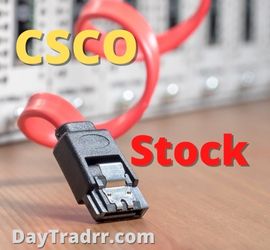What Is an Absolute Auction?
 An absolute auction is where real or personal property is sold to the highest bidder regardless of price with no set minimum or reserve. It is a type of auction in which the sale is awarded to the highest bidder. Absolute auctions do not have a reserve price, which sets a minimum required bid for the item to be sold. The purchase amount is neither set nor negotiated. Instead, the purchase amount comes through competitive, open bidding, with the highest price as the winning bid.
An absolute auction is where real or personal property is sold to the highest bidder regardless of price with no set minimum or reserve. It is a type of auction in which the sale is awarded to the highest bidder. Absolute auctions do not have a reserve price, which sets a minimum required bid for the item to be sold. The purchase amount is neither set nor negotiated. Instead, the purchase amount comes through competitive, open bidding, with the highest price as the winning bid.
The sale goes to the last, highest, and best bidder, regardless of price. This type of auction typically produces the most urgency and excitement among bidders. The goal is to generate more interest, greater attendance, and ultimately produce higher bidding. Ideal situations for absolute auctions can include properties in high demand and those with no mortgages or liens.
Foreclosed properties are often sold via an absolute auction. Potential buyers can find out from the mortgage holder, often a bank, what type of auction will be held. For example, if the property will be sold at an absolute auction or by a lender confirmation auction. Farm equipment and machinery are the kinds of items that are often sold at an absolute auction.
How an Absolute Auction Works
There are many different types of auctions. An absolute auction is a classic auction-style where the item is sold to the highest bidder, regardless of the price. There is no reserve price or minimum floor above which bidding must start. Typically, the bidding in an absolute auction starts at $0.
This is different than other auction styles. For example, in a sealed bid auction, people submit secret bids. In a Dutch auction, the auctioneer starts at a high price and decreases it until somebody agrees to buy the item.
Absolute auctions can occur in various venues for different purposes. This includes real estate foreclosure, an online marketplace (such as eBay.com), or live auction events. School foundations and charities, for example, often hold absolute auctions as fund-raising events. Commercially, these auctions are often held where there is an immediate demand to sell an item. For example, the estate sale of a deceased person.
Some Sellers are afraid of absolute auctions. They fear the property will sell for a ridiculously low price. However, absolute auctions tend to bring out the most bidders and therefore the highest prices. Real estate and property will usually bring what it is worth on the Auction Date. Particularly if the auction is well advertised and well-conducted by a professional Auctioneer.
Absolute Auction vs Other Types of Auction
Reserve Auction
With a reserve auction, the auctioneer will submit the last and highest, or most viable bid to the seller. The seller then has the right to accept or reject the offer. In the real estate market, this is a popular way to offer properties. Particularly when they have mortgages, liens, or other factors that must be considered prior to sale. A variation includes setting a published or unpublished minimum bid or reserve price. If the auction meets or exceeds the minimum bid, then the property is confirmed sold. In essence, the lower the minimum bid, the higher the interest generated among bidders. If the minimum bid is perceived as too high, then the auction may see less attendance and low interest.
Lender Confirmation Auction
A lender confirmation auction requires that the lender must approve the bid in order to complete the transaction. In real estate, a foreclosed property sale requires lender confirmation. As a result, the highest bidder does not necessarily win the sale. The individual with the winning bid must have the necessary money to spend. However, they must also be screened and accepted by the mortgage holder. This is typically a bank or government entity.
Sealed-bid Auction
In this type of auction, each party sends a sealed bid to an auctioneer who opens all bids. The auctioneer determines the highest bid and sells the item to that bidder for the bidding price. This type of auction can execute in a single round of communication between the bidders and the auctioneers. However, it has disadvantages. First, the auctioneer will know the exact price that each party is willing to pay. Second, it does not support the optimal distribution of goods. In a sealed bid auction, participants will have beliefs about what others will bid.
If a participant believes that she will have the highest bid, and the second-highest bid will be substantially beneath that, then she has an incentive to lower her bid. For example, if she values an item at $1,000, but believes that the second-highest bidder values the item at $500, then she is likely to place a bid slightly higher than $500. If she is wrong about the distribution of other bids, then the final item will not go to the party that values it most, and the seller will have given up the item at a price lower than he would have achieved with an English auction. (Source: usenix.org)
Dutch Auction
In a traditional Dutch auction, the auctioneer begins with a high asking price. Bids are then lowered until some participant is willing to accept the auctioneer’s price. or, a predetermined minimum price if one was set. The bidding participant pays the last announced price. This type of auction is convenient when it is important to auction goods quickly. This is because a sale never requires more than one bid. The Dutch auction is named for its best-known example, the Dutch tulip auctions. Dutch Auction is also sometimes used to describe online auctions where several identical goods are sold simultaneously to an equal number of winning bidders. (Source: allstarce.com)
Absolute Auction vs Traditional Real Estate Sales Process
Traditional real estate sales consist of the buyer negotiating the seller down until they both agree on a price. With an auction, there is more competition and only the highest bidder can buy the property. Auctions introduce a competitive factor, unlike traditional negotiations. During an auction, every time someone bids, the market value is reinforced while simultaneously promoting more bidding.
Professionally conducted auctions also streamline what could otherwise be a lengthy and costly sellout period. Many have experienced their property sell in a matter of minutes. Often, for top dollar when it would not sell in a traditional market. There are two reasons for this. Professionals are the ones leading the proceedings at the auction and the property is being marketed to a large group of engaged buyers.
Knowing the best type of sales approach for real estate is dependent on many factors. There can be many benefits to using an auction to sell land. However, it’s important to ask for professional for help. This can ensure you get the best result for your specific financial needs.
Absolute Auction Example
Grandpa Phil passes away in rural Iowa. The family all live in the big city and decide to sell Phil’s personal effects in an estate sale auction. They want to immediately liquidate all of the items. Being city folk, they do not have a minimum price they are trying to get for any of the items. They hold a live auction in which the bidding starts at $0 for the items with no reserve. There is no negotiation and the highest bidder for each item wins it. Payment is made and the winner walks away with the item. This is an example of an absolute auction.
Up Next: What Is Backward Integration?
 Backward integration is a form of vertical integration. It occurs when a company expands its production role to accomplish tasks that were previously completed by companies up the supply chain. For example, a company might buy its supplier of inventory or raw materials. Merging with the former supplier provides a number of benefits and greater control of the products or services needed for its internal production.
Backward integration is a form of vertical integration. It occurs when a company expands its production role to accomplish tasks that were previously completed by companies up the supply chain. For example, a company might buy its supplier of inventory or raw materials. Merging with the former supplier provides a number of benefits and greater control of the products or services needed for its internal production.
Typically, companies often complete backward integration by acquiring or merging with these former suppliers. However, they can also establish their own subsidiary to accomplish the task. Complete vertical integration occurs when a company owns every stage of the production process. They control raw materials through production to finished goods and services. However, backward integration can be capital intensive. It often requires large sums of money to purchase all or part of the supply chain.




